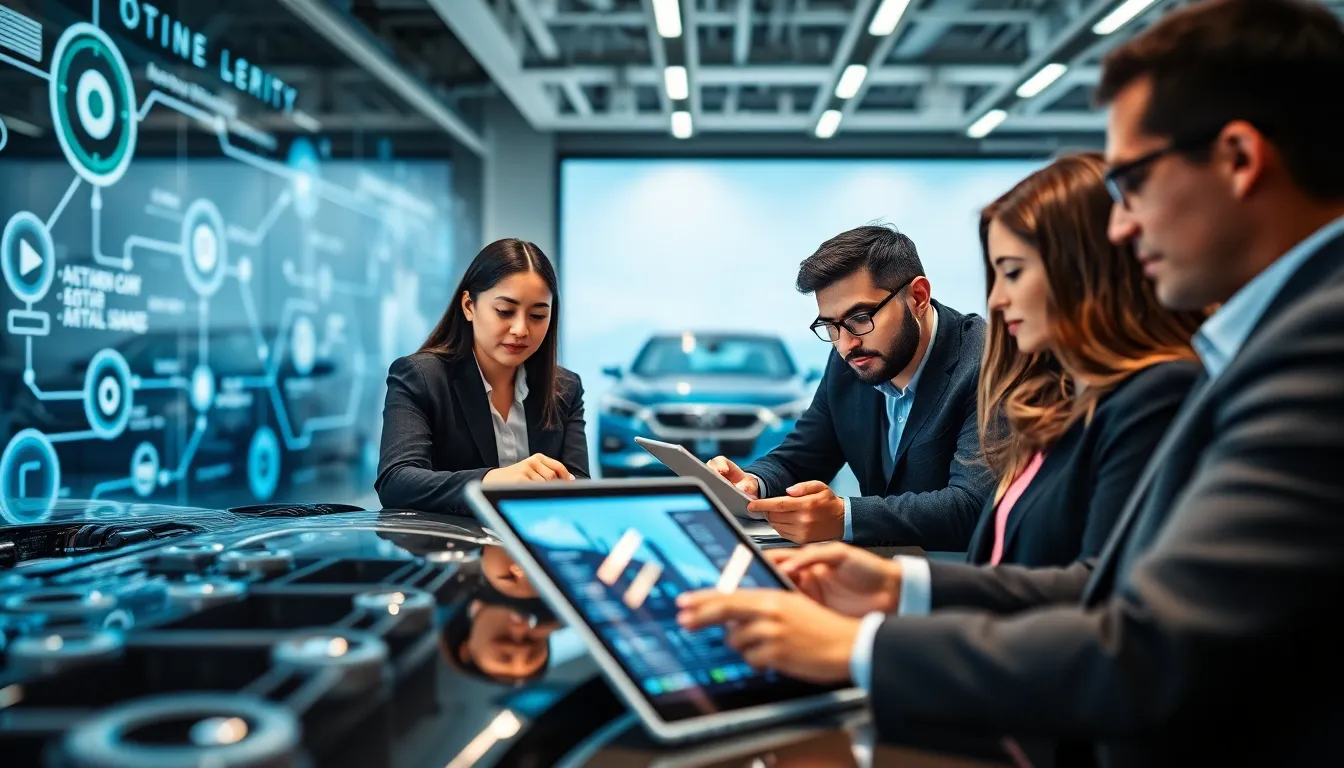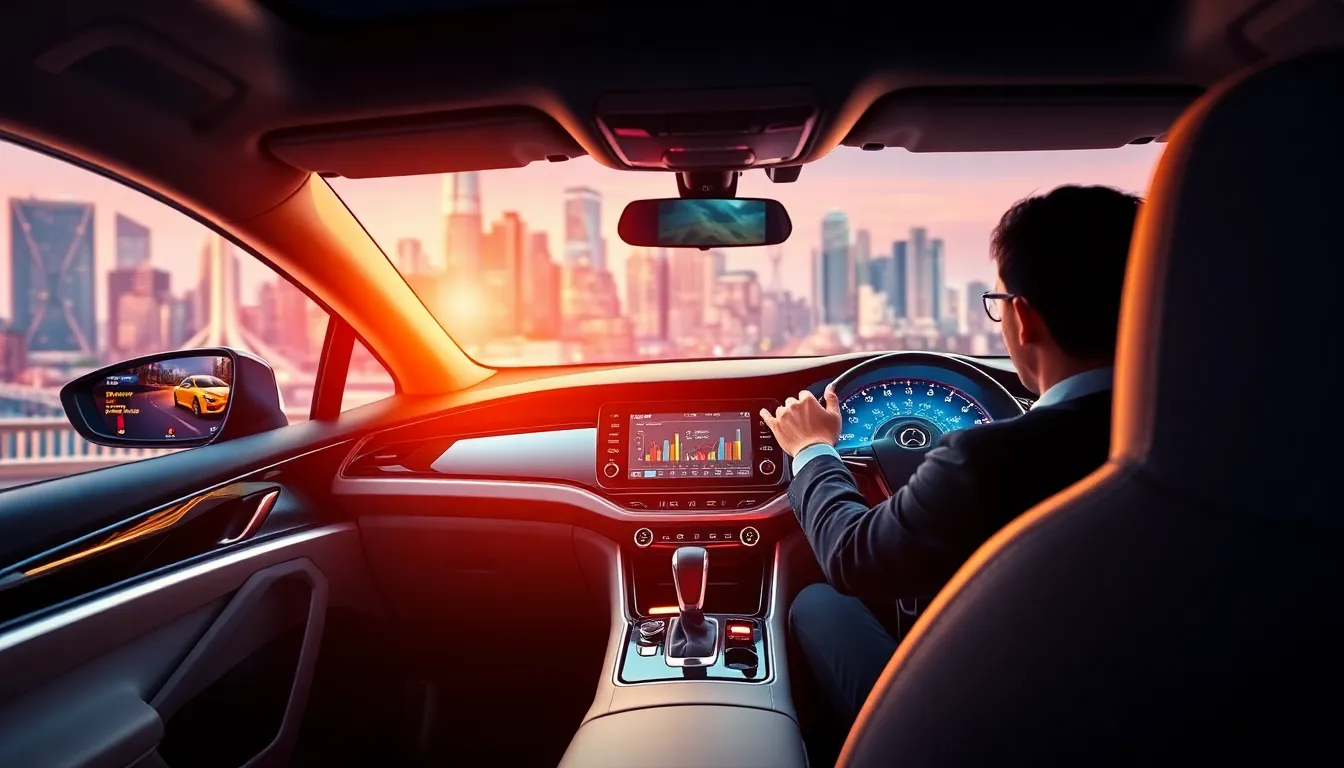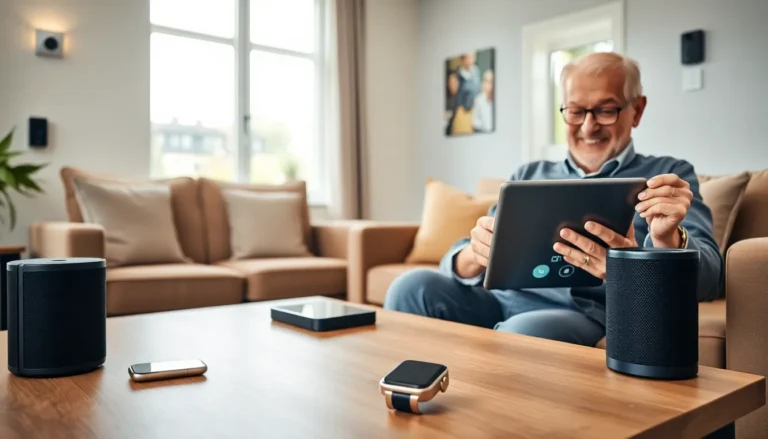Imagine cruising down the highway in a car that talks to you, knows your favorite playlist, and even reminds you to grab a coffee. Welcome to the future of driving, where the Internet of Things (IoT) transforms your vehicle from a simple mode of transport into a smart companion. With every mile, the automotive world is becoming more interconnected than ever. Buckle up as we jump into how IoT is innovating the automotive industry, transforming our vehicles, and enhancing our driving experiences.
Table of Contents
ToggleUnderstanding The Internet Of Things (IoT)

What Is IoT?
The Internet of Things refers to a vast network of physical devices that communicate and exchange data over the internet. This encompasses everything from smart home devices to your car. In essence, it extends the internet’s reach beyond traditional computers and smartphones to the myriad objects in our lives, allowing them to collect and share data.
Key Components Of IoT Technology
Key components of IoT technology include sensors, software, and connectivity. Sensors capture data from the environment, think of them as your car’s senses. They gather information like temperature, location, and tire pressure. Software processes this data, turning it into actionable information. Connectivity, whether through Wi-Fi, cellular networks, or Bluetooth, allows these devices to communicate seamlessly. Together, these components create an intricate web of connectivity that is reshaping the automotive sector.
The Automotive Industry And IoT
Current Applications Of IoT In Automotive
Today, IoT is revolutionizing various aspects of the automotive sector. One significant application is real-time tracking, where vehicles communicate their location and health status with fleet operators. This allows for better resource allocation and improved efficiency. Also, predictive maintenance is becoming a standard: cars can send alerts when they need servicing, reducing the chances of breakdowns.
Fleet Management Solutions
Fleet management solutions powered by IoT are gaining traction. These platforms deliver real-time insights into vehicle performance, driving behavior, and maintenance needs. Companies can monitor their fleet efficiency, reduce fuel consumption, and improve routing, all while keeping an eye on safety standards.
Smart Vehicles And Connected Cars
Next, smart vehicles and connected cars are leading the charge toward an interconnected driving experience. Such vehicles can interact with various infrastructures, like traffic lights and parking systems, optimizing traffic flow. With features like automatic emergency braking, lane-keeping assistance, and even voice-activated controls, the driving experience is not only more fun but safer too.
The Role Of Data Analytics
Enhancing User Experience Through IoT
Data analytics plays a crucial role in enhancing the user experience. By analyzing data collected from vehicles, manufacturers can tailor infotainment services and provide personalized recommendations. For example, if a driver frequently visits a particular restaurant, the system might suggest stopping there during a trip.
Safety Features Enabled By IoT
Safety features powered by IoT are a game-changer. Real-time data processing allows cars to detect hazards and respond accordingly. Smart braking systems, collision alerts, and adaptive cruise control adjusted by real-time traffic data help in minimizing accidents. As more vehicles become interconnected, the overall scope of safety continues to improve.
Challenges And Considerations
Data Privacy And Security Concerns
While the benefits of IoT in automotive are striking, challenges abound. Data privacy and security concerns must be addressed. As vehicles collect and share vast amounts of user data, ensuring that this information is protected is paramount. Cybersecurity threats can compromise personal data and vehicle functionality, making robust security measures essential.
Connectivity Issues And Infrastructure Limitations
Connectivity issues also pose a significant challenge. Not all regions have reliable internet access, which can limit the effectiveness of IoT applications. Besides, infrastructure must evolve to support increased vehicle-to-everything (V2X) communications. Addressing these limitations is crucial for maximizing the potential of IoT in the automotive realm.
The Future Of IoT In Automotive
Emerging Trends And Innovations
As technology advances, new trends are emerging. Artificial intelligence and machine learning are becoming integrated into automotive IoT solutions, allowing for smarter operations and predictive analysis. Innovations in vehicle design, such as modular systems and enhanced battery technology, are also paving the way for more connected cars.
The Shift Towards Autonomous Driving
The shift towards autonomous driving represents the pinnacle of IoT in automotive. Cars that can navigate their environment with little to no human intervention rely heavily on sensor data and machine learning algorithms. This future holds the promise of reducing traffic, minimizing accidents, and creating a new driving paradigm.





